
44 minute read
Opinion
GOT AN OPINION THAT COUNTS? Email iba@keymedia.com
Insurance must innovate or die
Insurers that don’t have a clear and consistent mission in their innovation operations risk huge failure, writes Robert Lowe
FOR MANY of those outside – and even inside – the industry, insurance and innovation may not seem to go together. Yet, rather quietly, most large insurers have been ramping up their innovation spending over the past decade. This is largely in response to the rise of more agile insurtech startups and to deliver complementary services like healthy lifestyle apps, data-driven pricing operations, transparency in policy specifics and other value-added consumer technologies.
While this is a good start, it isn’t enough to keep the industry on the stable footing it has enjoyed for generations. Recent difficulties in settling claims from the COVID-19 pandemic are only the tip of the iceberg. Thanks to climate change, large swaths of the global P&C insurance industry are coming into the crosshairs of generational change. The effects of our warming planet have begun making whole categories of property assets borderline uninsurable. As the effects get worse, the strategic options will only get tougher. If insurance companies innovate in ways they already understand – tweaking their underwriting policies, pushing harder on claims or other ‘surface’ improvements – they’ll find themselves fighting over smaller pieces of a shrinking pie.
So what can be done on the innovation front to help the industry maintain long-term viability? These days, the typical industry response to looming threats is to create a fancy new innovation center or to go buy a bunch of startups. But by pouring knee-jerk resources and publicity into innovation, corporations are doing themselves a disservice.
It’s impossible to predict the future with perfect clarity. But it’s also easy to imagine how a warmer planet will affect various asset classes around the world. Insurers need to double down on innovations that can help them change the game – for example, using AI and weather data to predict where disasters will strike, leveraging Big Data and climate change models to anticipate changing patterns of risk, and building risk mitigation solutions to serve a growing ‘prevention’ side of the market.
One of the greatest myths in business is that innovation is incredibly organized and meticulously game-planned. The truth is, too
many firms make tentative forays into innovation, often on a number of fronts, creating a tangled web of initiatives and priorities that are often incoherent. It’s impossible for any mission-critical business function to succeed without a clear and consistent vision that enables a strong operational foundation. Companies across the business spectrum don’t have the modern infrastructure in place that’s needed to drive widespread innovation success.
Other core departments, such as finance and marketing, benefit from experienced leaders, a clear set of modern measurement tools to track performance, and established protocols for reporting and reviewing progress. Yet most insurers have not formalized the central core of their innovation operations. They don’t have a centralized ability to track projects, coordinate global programs or evaluate the likelihood of success on anything but a finger-to-the-wind level. This has undermined innovation success and bred skepticism among senior decision-makers when it comes to funding priorities. Establishing a formal innovation operations infrastructure can go a long way in fixing the issues that exist on both of these fronts.
Pursuing broad-spectrum innovation means taking some strategic leaps. This is often where innovation efforts begin to fall apart, because it can be uncomfortable for leaders to commit when the outcomes are speculative. Unlike most executive decisions, investing in strategic innovation cannot be forced into a neat box. I’ve seen time and again that simply adding an innovation team or opening an innovation center without ongoing cross-functional coordination commits the effort to failure.
Future scenarios should be modeled, and innovation risk can (and should) be managed over time – but innovation endeavors won’t be crisply predictable, nor can they be de-risked
to ‘normal’ levels of corporate comfort. But the do-nothing alternatives are far worse. The executive team must learn to adopt a specific, calibrated type of ambiguity tolerance.
The climate-induced challenges facing insurance companies are very real. But with the proper strategies, tools and leadership discipline, traditional insurers can retool their businesses to better meet the needs of the market, both today and in the future.
Robert Lowe is CEO of Wellspring Worldwide, a provider of knowledge supply chain software systems. He is a former director of enterprise creation and professor at Carnegie Mellon University.
SPECIAL REPORT
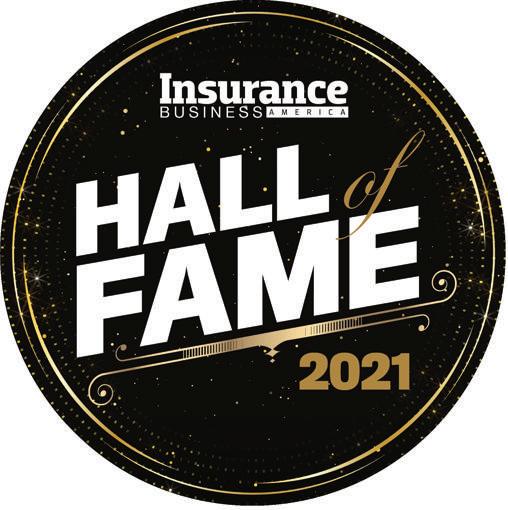

IBA celebrates 24 visionary leaders who have helped shape the insurance industry into what it is today
CONTENTS PAGE
Feature article ...................................................................
Methodology .....................................................................
Hall of Fame 2021 ............................................................
Profiles ..............................................................................

HALL OF FAME 2021
THE PINNACLE OF ACHIEVEMENT
THE OLDER you get, the more wisdom you acquire – so one could argue that it’s good news that the United States is getting older as a country. While the insurance industry doesn’t always see it that way (according to MarshBerry, insurance companies will have to hire five new producers for every veteran producer who will be leaving in the next decade), the value of these industry veterans can’t be denied.
IBA’s fifth annual Hall of Fame includes 24 executives, innovators and entrepreneurs who have risen from a variety of backgrounds to establish themselves as leaders in the insurance industry. And in the face of a mass wave of retirements from the industry, they’re determined to help pass on their knowledge to
THE 2021 HALL OF FAME BY GENDER
Male 67%
Matthew Cooper, Inner-City Underwriting Agency
young professionals who are just getting started in insurance.
“There is no comparison in terms of experience, expertise and skills, as those are all phenomenal assets which have been developed
Female 33%
over time by the Hall of Famers,” says Margaret Redd, executive director of the National African American Insurance Association (NAAIA), a 2020 Hall of Famer and a member of this year’s Hall of Fame judging panel. “However, so many in this younger generation have the passion, the intellectual capacity and the desire to have real and significant impact upon our today and our future.
“These young people have come of age in the tech era, and that gives them an edge. They have also faced major crises like the ‘twindemics’ of 2020 – COVID and the raised awareness for systemic injustices around the country and the world. As a result, they have an appreciation for their ability to have an impact upon their lives and others’. They have seen companies make tremendous operational and strategic shifts in their business models, seemingly overnight, and so they have built muscle in the face of change and our ability to navigate change.”
Fellow Hall of Fame panelist Kevin Davis, president of Kevin Davis Insurance Services,

an Amwins company, echoes those sentiments.
“The younger generation appears to use technology and data to solve problems, and sometimes quite effectively, while we – the individuals who have been around for a while – tend to use our contacts, our knowledge, and experience and intuition as a way of solving a problem,” he says. “That can also be quite effective.”
As panelists, Redd and Davis had the opportunity not only to evaluate this year’s Hall of Fame nominees, but also to nominate people themselves. Redd sought out a wide range of candidates, from results-oriented progressive thinkers to those with a strong commitment to diversity, equity and inclusion or community service. Meanwhile, Davis looked for leadership skills, experience and the ability to stay relevant.
Clients come first Among the two dozen inductees into this year’s Hall of Fame, the importance of doing right by clients was a common thread.
“As an insurance broker, my goal is to bring the best the worldwide insurance marketplace has also launched Inner-City Wrap, a construction wrap-up insurance administration and placement service company that is, among other things, providing the wrap-up insurance for the construction of the Obama Presidential Center. He’s also proud to have expanded the distribution of insurance to all Chicago neighborhoods and to have provided a business model that agencies and insurance companies have copied to expand distribution in other cities.
Fellow Hall of Famer Ed Levy, who retired from the industry in 2018 after a 40-year career and currently serves on the board of insurtech Openforce, likewise says he has “always been focused on doing the right thing. To do this, you need to know the marketplace, including your competition’s abilities. You need to know coverages, and you need to make sure the insured is actually getting something that fits their needs.”
For Hall of Famer Ben Francavilla, president of Amwins Program Underwriters, commitment to clients means taking the time to truly understand what they do so he can provide the right coverage.
Ed Levy, Openforce
has to offer to my clients, regardless of commission percentage or profit-sharing arrangement,” says Matthew Cooper, president of Inner-City Underwriting Agency. “Spend as much time as it takes to make sure the client understands what he/she is buying and how their wealth is being protected.”
In addition to founding Inner-City Underwriting Agency more than 25 years ago, Cooper
“Ben believes in specialization, not generalization,” says Sara Morton, director of corporate communications at Amwins Group. “He understands his clients’ business, their complex needs and the challenges they face. His unparalleled expertise in programs means his clients have a distinct advantage of a team of underwriting specialists that understands the nuances of the markets they support.”
METHODOLOGY
Starting in July, Insurance Business America invited insurance professionals from across the country to nominate standout industry veterans for the annual Hall of Fame.
This year’s Hall of Fame class was selected by an independent advisory panel of industry leaders and previous Hall of Fame honorees, including: • Kevin Davis, Kevin Davis Insurance
Services, an Amwins company • Sabrina Hart, Zurich North America • Margaret N. Redd, National African
American Insurance Association
• Dave North, Sedgwick
Nominees had to have been in the industry for at least 35 years. The panel considered each nominee’s history of distinguished service to the insurance profession, the leadership and inspiration they provided to others in the sector, their role in guiding future generations of entrepreneurs and business leaders, their contributions to the leadership and direction of industry associations, and any visionary strategies and innovations that have made an outstanding contribution to the industry as a whole.
5th 5th
Year of the Insurance Business America Hall of Fame
133
Total number of inductees since 2017
29%
Percentage of 2021 Hall of Famers who are CEOs

HALL OF FAME 2021
THE 2021 HALL OF FAME BY YEARS IN THE INDUSTRY
35 to 40
8%
41 to 49
50 or more
29%
63%
Enhancing diversity Fostering greater diversity, equity and inclusion is a key priority for the insurance industry at the moment – and to be successful, DEI initiatives must have buy-in from the top. So it’s heartening to see how many of this year’s Hall of Fame inductees have made DEI a personal priority.
At Chubb, John Lupica, vice chairman and president of North America insurance, serves as an executive sponsor of Mosaic, the company’s multicultural business roundtable. In addition, he has “played a key role in the expansion of the company’s diversity initiatives, from groups focused on furthering the careers of women and those in the LGBTQ+ community to the rollout of distinct employee networks for Black, Asian and Latinx Chubb colleagues,” says Chubb SVP Matthew Merna.
Cooper, meanwhile, founded the Chicago chapter of the NAAIA, and he’s optimistic about the work the organization is doing to boost the number of minorities in the industry.
“I believe the NAAIA will expand and work towards increasing the number of African Americans in the business,” he says. “It will also be important for more African American-owned insurance agencies to be formed to provide employment and training to the community.”
Higginbotham chairman and CEO Rusty Reid is another Hall of Famer who recognizes the importance of organizations like the NAAIA in increasing the diversity of the insurance industry workforce. Last year, he forged a partnership with the NAAIA to build a pipeline for diverse talent at Higginbotham. According to Christina MaGee, Higginbotham’s director of corporate communications, “the partnership gives Higginbotham many opportunities to engage with industry and market leaders and create new avenues to attract qualified, diverse talent to the firm.”
Nurturing the next generation So what can young insurance professionals learn from this year’s Hall of Famers? Levy credits three values with helping him build a successful career in insurance.
“The first value is, whatever you do, do it for the right reason,” he says. “Never sell a policy for the revenue. Sell it because it is the right policy for the insured. The second value I follow is to pay it forward. Someone was there to help me learn – make sure you are willing to help someone else learn. Be a mentor, as it goes a long way to success. Lastly, I think it is important to recognize that everyone makes mistakes. I believe it is OK to make a mistake – just make sure you learn from the experience and don’t make the mistake again.”
His advice to young people eyeing their own spot in the Hall of Fame one day is to put in the effort to establish yourself as an expert at something. And, paraphrasing Warren Buffett, he cautions, “It takes a lifetime to build a reputation and a second to kill it.”


Anthony J. (Tony) Kuczinski CEO Munich Re US Holding
Phone: 609-243-4200 Email: akuczinski@munichre.com Website: munichreamerica.com
Ben Francavilla President Amwins Program Underwriters
Phone: 717-214-7601 Email: ben.francavilla@amwins.com Website: amwins.com
George Rusu Chairman, CEO and Co-Founder Captive Resources
Phone: 847-860-7069 Website: captiveresources.com Greg Williams Co-Founder, CEO and President Acrisure
Phone: 616-265-1633 Email: communications@acrisure.com Website: acrisure.com
John Keegan Executive Vice President Amwins Brokerage of New Jersey
Phone: 732-346-3911 Email: john.keegan@amwins.com Website: amwins.com
Barbara Strauss Executive Vice President York International Agency
Bob Preston Former Owner/Operator (Deceased) Alternative Risk Underwriting
Brad Havemeier President Gulfshore Insurance
Christine LaSala Senior Independent Director Beazley Group
Dale Sharpe Jenkins Founder, Agency Principal The Jenkins Agency John Lupica Vice Chairman, Chubb Group President, North America Insurance Chubb
Website: chubb.com
Kathleen Felderman Managing Principal, National Real Estate Practice Leader EPIC Insurance Brokers & Consultants
Phone: 303-809-8995 Email: kathleen.felderman@epicbrokers.com Website: epicbrokers.com
Lori Ann Long President Community Association Underwriters/ Alliant Insurance Services
Phone: 267-757-7125 Email: llong@cauinsure.com Website: cauinsure.com
Marc Schmittlein President and CEO CopperPoint Insurance Companies
Phone: 602-631-2139 Email: mschmittlein@copperpoint.com Website: copperpoint.com
David Dybdahl CEO American Risk Management Resources Network
Denise Lloyd President and CEO D.H. Lloyd & Associates
Ed Levy Director Openforce
Jerry Sullivan Chairman The Sullivan Group
Karen O'Connor Corrigan President O’Connor Insurance Matthew Cooper President Inner-City Underwriting Agency
Maureen Gallagher Agency President; National Real Estate and Workers’ Comp Vertical Leader AssuredPartners
Richard Denning President Shelter Island Risk Services
Rusty Reid Chairman, President and CEO Higginbotham
William R. Berkley Founder W. R. Berkley Corporation

HALL OF FAME 2021

ANTHONY J. (TONY) KUCZINSKI
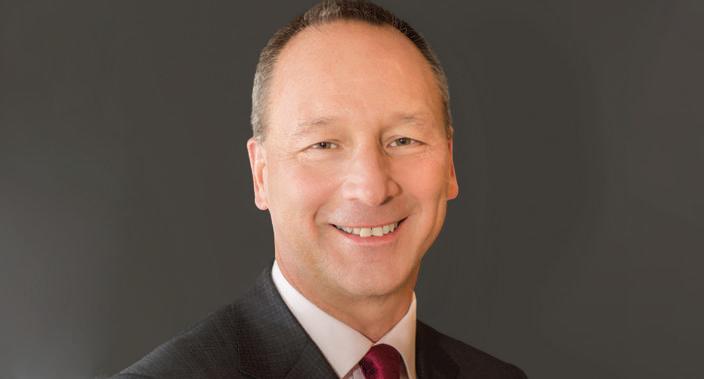
CEO Munich Re US Holding
With more than 37 years of experience in the insurance industry, Tony Kuczinski is responsible for Munich Re’s property & casualty insurance, reinsurance and specialty insurance businesses in the United States.
“When I began my current role as CEO, I had to execute a strategic plan requiring massive changes in thinking,” he says. “The goal was taking a well-respected, relatively large, singular channel reinsurer and transforming it into a powerhouse – a multichannel, broader industry player.”
Kuczinski’s success would be measured by premium, profits, return on capital, innovation and thought leadership. “This goal required a change in corporate culture and mindset, as well as a radical shift in our support of clients and distribution partners, and better leveraging of the broader platform and the Munich Re Group while having a keen focus on both organic and inorganic drivers of growth,” he says. “Successfully leading this extremely challenging transformation over 13 years, which continues today, has been one of the most rewarding experiences of my career.” Kuczinski holds a bachelor’s degree in business administration from Pace University and has completed the advanced executive education program in conjunction with the AICPCU and the Wharton School. During his 32 years at Munich Re, he has held various roles. Prior to assuming his current position in January 2008, he was president of the specialty markets division of Munich Reinsurance America and president of American Alternative Insurance Corporation and the Princeton Excess and Surplus Lines Insurance Company.
Kuczinski has also been active in several insurance industry associations throughout his career, including serving as chair of the American Property Casualty Insurance Association, Reinsurance Association of America and The Institutes.
A strategic and forward-thinking leader and a perpetual learner, Kuczinski isn’t afraid to ask tough questions. “I’m consistently willing to challenge myself and my views, which is especially vital in our current fastpaced, whitewater world,” he says. “I consider myself to be a humble and authentic leader who connects well with people at all levels and gains energy from others. Few things take me by surprise. While I consider history to be important in how it teaches and shapes us, I believe good leaders need to focus as much, if not more so, on what lies ahead and in navigating a path forward.”
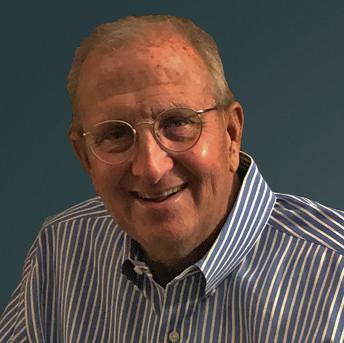

JOHN KEEGAN
Executive Vice President Amwins Brokerage of New Jersey

BEN FRANCAVILLA
President Amwins Program Underwriters
“Specialization is the key to our success,” says Ben Francavilla, president of Amwins Program Underwriters (APU). “We are focused on being the best in class in all the industries we serve. We are also laser-focused on providing positive returns to our carrier partners, and that has enabled us to have program longevity with our carriers.”
With 25 years of expertise in developing and managing insurance programs, Francavilla is currently responsible for the oversight of more than 35 insurance programs that cover a variety of niche industries. APU has 10 locations across the US with over 150 dedicated professionals and more than $390 million in annual placements. The company’s growth is a direct result of Francavilla’s ability to read the market, understand what’s needed and develop new programs to meet those needs.
“At Amwins Program Underwriters, we’re proud of the fact that we were the vanguard of the program business movement, having launched programs as far back as the 1990s,” says Francavilla, who joined APU as senior managing director in 1999. “We’ve been able to hone our craft, and by doing so, I think we have been able to teach a whole new generation how to make programs the fastgrowing segment of the insurance industry it has become.” D uring his 42-year career, John Keegan has left an indelible mark on the insurance industry, including mentoring industry leaders in the underwriting community, as well as retail and wholesale brokers. Keegan joined Amwins in 2004 as part of the Property Risk Services (PRS) acquisition and was integral early in Amwins’ genesis, forming a small team that built PRS into a premier wholesale broker servicing second- and third-tier brokers with superior marketing relationships and consultation. As PRS president, Keegan was instrumental in growing the company into a model of the current wholesale brokerage landscape with strong marketing ability, unparalleled carrier relationships and a full range of services, including due diligence, claims advocacy and tailored manuscript forms.
During his career, Keegan has served as senior vice president of major accounts for Home Insurance Company in Philadelphia and New York City and as senior vice president and property manager for New York City and most of the East Coast for Aon, where he was eventually promoted to property practice leader. He also worked for Napco, a spinoff of TriCity brokerage, where he serviced some of the nation’s largest clients before being promoted to president of the company.
Keegan remains active in the East Coast brokerage and underwriting community through organizations such as the Insurance Brokers’ Association of the State of New York and the Inland Marine Underwriters Association. Outside of the industry, he is involved with Wounded Warriors.

HALL OF FAME 2021
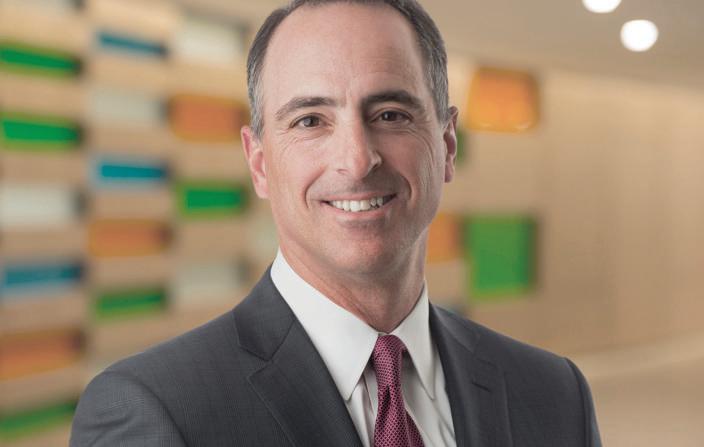
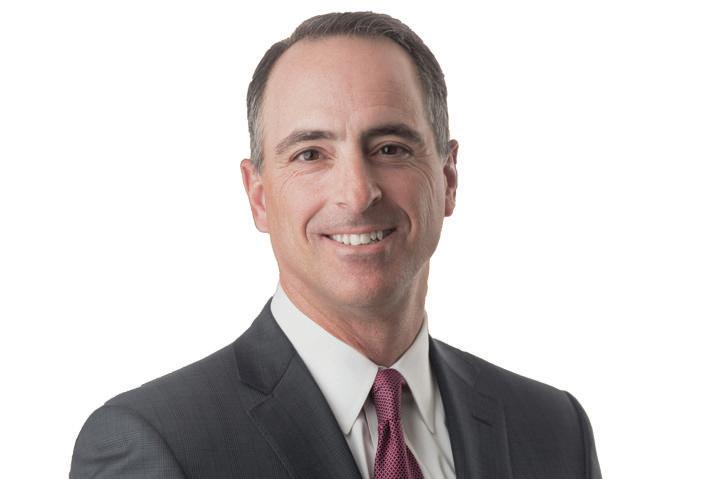
JOHN LUPICA
Vice Chairman, Chubb Group and President, North America Insurance Chubb
John Lupica serves as vice chairman, Chubb Group and president, North America Insurance, with executive responsibility for all of Chubb’s general insurance business in the US, Canada and Bermuda, including commercial property & casualty, personal lines, agriculture and accident & health insurance. His scope of responsibility includes all products, underwriting, marketing and sales, claims, actuarial, and support functions related to these business lines.
Lupica has close to four decades of property & casualty insurance experience, and he’s learned a lot during that time. “The most successful individuals I know make it a point to never stop learning, regardless of where they are in their careers,” he says. “In the insurance industry, new risks, new technology and new ways of doing business require all of us to be constantly learning. For these reasons, it’s imperative to become a student of the industry. We should all challenge ourselves regularly to learn something new every day and seek out formal learning opportunities to grow our expertise.”
Prior to his current role, Lupica served as president of North America major accounts and specialty insurance at Chubb. Before ACE’s acquisition of Chubb in January 2016, he was vice chairman of ACE Limited and ACE Group and chairman of insurance for North America.
Lupica joined ACE in 2000 as executive vice president of the US professional risk business and advanced to division president of the unit. He also served as division president of US regional operations before being named president of ACE USA in 2005. He was appointed to the additional role of chief operating officer for North America insurance in 2010. Prior to joining ACE, he served as senior vice president for Munich-American Risk Partners and held various management positions at AIG.
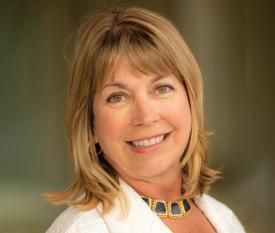
KATHLEEN FELDERMAN

Managing Principal, National Real Estate Practice Leader EPIC Insurance Brokers & Consultants A t EPIC Insurance Brokers, Kathleen Felderman has built and leads an innovative team with specific industry expertise that is recognized by underwriters and clients as best in class. “I was given the opportunity to design a practice platform in the way I always believed a team should function and be rewarded,” Felderman says. “It’s a heady thing to go all in and build a team from scratch, taking prior positive and negative career experiences and putting it all on the line. I’m proud to say it’s been a tremendous success.”
As managing principal and national real estate practice leader at EPIC, Felderman is responsible for the overall direction, goals and thought leadership of EPIC’s national real estate practice. She has been named a Power Broker for the real estate industry by Risk & Insurance three times, has been a member of IBA’s Elite Women list, and is a regular speaker for numerous national and international organizations, such as the National Multi Housing Council. While at EPIC, she has also helped raise more than $250,000 for Mercy Housing, the real estate practice’s chosen charity, to support additional services and a scholarship fund.
“Relationships are key to a successful career,” Felderman says. “Success can be individual, but I have found that being a part of a team of like-minded individuals enhances each day – and is a lot more fun!”


HALL OF FAME 2021
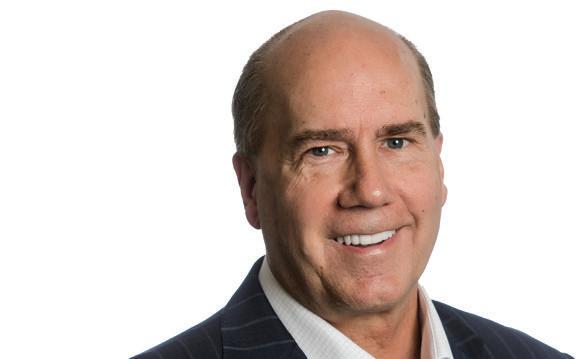
GREG WILLIAMS

Co-Founder, CEO and President Acrisure
Greg Williams is the co-founder, CEO and president of Acrisure, which he started in 2005. Under his leadership, Acrisure is the fastest growing broker in the history of the industry and also the most profitable top 10 broker. Acrisure today is diversifying into a fintech services platform with complementary capabilities in asset management, real estate, cyber services and more.
Acrisure’s historic success starts with a relentless focus on healthy partnerships and value creation. In doing so, Acrisure created a business model that minimizes disruption, aligns interests and prioritizes growth.
“Historically, insurance M&A has been a very disruptive process, with the negative impact on the acquired company often ignored,” Williams says. “The ensuing chaos can deeply damage the employer and employee relationship and, just as important, can disenfranchise clients – an unwanted outcome for all constituents. We saw a huge opportunity to offer a better alternative and have been very successful as a result.”
Acrisure was formed to provide intermediaries with access to differentiated resources and an attractive business model. The emphasis was on alignment of interests and maintaining an entrepreneurial dynamic by keeping client decisions at the local level. With these strategies, Acrisure has grown revenues from $38 million to over $3 billion in just over eight years (a compound annual growth rate of 67%) and increased EBITDA from $10 million to $1.2 billion in the same timeframe (a 72% CAGR).
Acrisure’s stellar value proposition stems from its vast network of partners and clients, differentiated data analytics, geographic diversity, and impressive artificial intelligence capabilities. “The best of humans and AI is a powerful combination and appeals to entrepreneurs globally,” Williams says.
“Our partners are bold, resilient and understand the power of the customer,” he continues. “Unlike many companies, Acrisure recognizes the power of human relationships and the many ways technology can make us more efficient and effective. The opportunity to expand our audience and accelerate the pace in which we win new business is real. But it takes both technology and humans to make this happen. Our results demonstrate the winning strategy is through this combination.”
Williams has extended Acrisure’s success and capabilities into distinct social impact. The company proudly supports the Helen DeVos Children’s Hospital in Acrisure’s home of Grand Rapids, Michigan, and formed Evolution Advisors alongside Russell Wilson, Russell Westbrook and Ciara to tackle DEI issues in financial services.
Prior to co-founding Acrisure, Williams was an investor and board advisor to a variety of companies and was a vice president at Michigan National Corporation (MNC), a $19 billion bank holding company. As a senior executive at MNC, Williams managed the commercial sales and services group, was a member of the corporate marketing committee and chaired the corporate operations committee.

MARC SCHMITTLEIN

President and CEO CopperPoint Insurance Companies S ince becoming president and CEO of CopperPoint Insurance Companies in 2016, Marc Schmittlein has helped lead what had been a former state fund with a single product operating in a single state into a multiline super-regional commercial carrier. CopperPoint now operates in 10 states with a strategic focus on continued growth. “The CopperPoint experience is really a crowning achievement on what has been a blessed, long and rewarding career,” Schmittlein says.
Prior to joining CopperPoint, Schmittlein spent 34 years at Travelers, culminating in a stint as president and CEO of the small commercial division known as Select Accounts – a $2.7 billion business unit of Travelers’ business insurance. Schmittlein also served on Travelers’ management and operating committees and held leadership roles in the commercial divisions of St. Paul Companies and Aetna.
At CopperPoint, Schmittlein has been at the helm of a team offering industry-leading workers’ comp and commercial property & casualty insurance solutions. “Being in the P&C industry for nearly 40 years, I reflect back on all of the mentors who helped open doors for my career,” he says. “The CopperPoint family of companies is focused on building a culture that delivers positive impact in the communities where we live and work by doing what’s right. It is my hope that our core mission will allow me to provide those same purpose-driven career opportunities for the next generation of talent.”
Saving the Chemical Industry Money on their Insurance Premiums
Consumer Specialties Insurance, RRG (CSI) is the chemical industry’s leading and most reliable source of liability insurance coverage. CSI also is the exclusive partner of the Household & Commercial Products Association (HCPA), the premier trade association representing the broad interests of companies engaged in the manufacturing, formulation, and distribution of specialty chemical products.
PRoGRam HIGHlIGHtS
Ø Commercial General Liability & Umbrella (including Products
Coverage); Ø Limits Available up to 5,000,000; Ø Minimum Premiums Starting at $3,500 (NEW!); Ø Limited Pollution Coverage up to $1,000,000 available;
Ø $250,000 of Product Withdrawal Expense Coverage; Ø Hired and Non-Owned Auto Liability; Ø 10% Premium Credit Upon Completion of “Product Care” Stewardship; Ø 12% Commission to Retail Broker on All New Business. Our recently expanded BRoaDENING ENDoRSEmENt includes blanket waivers of subrogation, blanket additional insureds, product withdrawal expense, and many other exclusive offerings.
*NEW loWER mINImUm PREmIUm oF $3,500 aVaIlaBlE FoR mEmBERS WItH aNNUal REVENUES oF $500,000 oR lESS
View our website (www.csiplus.com) for our PRoGRam aPPlICatIoN, FaQ PaGE, PRoGRam BENEFItS aND E-BRoCHURE.
CSI is the chemical industry’s leading risk retention group, providing chemical manufacturers and distributors with a financially stable source of liability insurance for over 25 years. We are the exclusive partner of The Household & Commercial Products Association (HCPA - www.thehcpa.org), the industry’s leader for education and legislative advocacy. With membership in the HCPA your clients can participate in HCPA’s Product Care stewardship and best practices program. CSI Policyholders that participate can be eligible to receive additional premium discounts. CSI is endorsed by HCPA and administered by Ames & Gough.
Contact Ames & Gough at 703-827-2277 or email us at csiplus@amesgough.com for more information.
8300 Greensboro Drive l Suite 980 l McLean, VA 22102 l www.amesgough.com
HALL OF FAME 2021
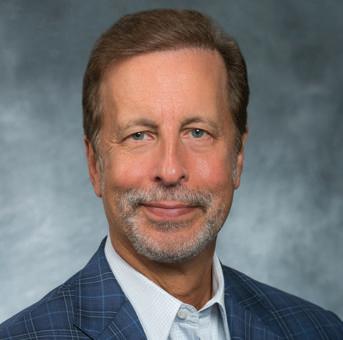
GEORGE RUSU

Chairman, CEO and Co-Founder Captive Resources
As the chairman, CEO and co-founder of Captive Resources (CRI), George Rusu is responsible for the overall representation of the company to its captives, as well as the strategic oversight and direction of all CRI operations. He has also served as a director of numerous companies, including an investment fund for CRI client captives and industry associations.
Rusu has led the growth of CRI for more than 35 years, always maintaining a competitive edge. “Rather than compete with others in the area of conventional insurance that already had great solutions, I looked for an area in our industry that could be improved,” he says. “That led me to the area of group captives, which seemed underserved by our industry. I then was fortunate enough to surround myself with a great team of people, far smarter than me, who helped me develop the area of group captives to solve our members’ needs. If you can solve the problems of others, you will always be needed."
Rusu says insurance is special in that professionals get to learn about hundreds of industries during their careers, not just one or two. As a result, it offers untold opportunities for young people.
“I’d recommend anyone joining our industry find something within it that they can make their own and improve,” he says. “If you find something that you uniquely enjoy doing, then you will never work another day in your life. You will simply wake up every day doing something you enjoy. I believe the insurance industry has some of the nicest and most interesting people within it. It’s been my pleasure to be a part of this unique community.”
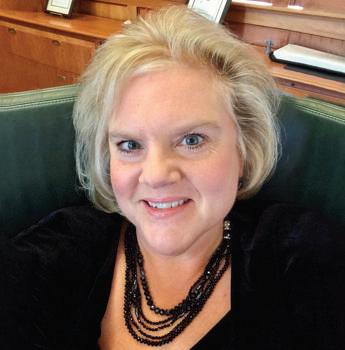
LORI ANN LONG
President Community Association Underwriters/ Alliant Insurance Services
Lori Ann Long’s 38-year career is a portrait of market-based innovation and empathetic leadership. “The most important thing is to realize that you can’t be an expert in all things,” Long says. “You need to surround yourself with a team of people you can trust to fill in your gaps, then give them the freedom to play to their strengths and thrive in the job they were hired to do.”
Long has achieved remarkable milestones during her years managing and directing Community Association Underwriters (CAU), an Alliant company and MGA that provides insurance for community associations throughout the US. When Long joined CAU in 1993, it was a $2 million company. Today, thanks to her leadership as president, CAU is a nearly $220 million enterprise. In 2020, she presided over a record year of 12% growth and has overseen further growth and expansion throughout 2021.
Long is one of the original recipients of the Community Insurance Risk Management Specialist (CIRMS) designation from the Community Association Institute (CAI) and is a sought-after speaker for numerous CAI events.
“The most important thing to remember is that insurance is still a people industry,” she says. “I meet with people, talk to them and let them know I value them as an individual, not just what they can do for the bottom line.”
SECTOR FOCUS: EMPLOYMENT PRACTICES LIABILITY
Employment issues
Between COVID-19, vaccine mandates and an ongoing rise in sexual harassment claims, employers are under pressure on multiple fronts. IBA checks in with experts in employment practices liability insurance to find out how the market is responding
WHAT EPL COVERS
Sexual harassment
Discrimination
Wrongful termination
Breach of employment contract
Negligent evaluation
Failure to employ or promote
Wrongful discipline
Deprivation of career opportunity
Wrongful infliction of emotional distress
Mismanagement of employee benefit plans
IT’S NOT easy running a business these days. Ongoing issues, ranging from concerns about COVID-19 and vaccines to the hyper awareness of sexual harassment brought about by the #MeToo movement, have been challenging employers. Fortunately for them, employment practices liability (EPL) insurance is there to protect them against claims of wrongdoing.
Over the past year and a half, there’s been an influx of first-time buyers to the segment, says Jason Binette, EPL product manager for AmTrust Exec. “We are seeing new business submissions from applicants that have been in business for 40 years and have never purchased EPL coverage before now. It is roughly a 20% influx in new first-time buyer submissions over prior years.”
According to Anne Gouin, product director of employment practices liability at The Hartford, the EPL market has been firming over the past year. There have been limits in capacity, increases in self-insured retentions and more use of sublimits to manage severity in a carrier’s book. In addition, the sector continues to experience an evolving risk environment, Gouin says, leading to greater discipline around pricing, retentions, and terms and conditions.
“Among the emerging exposures facing employers nationwide and the EPL sector is the impact of vaccines and proposed federal and state vaccine policy, as well as new and proposed federal, state, and local laws, such as statutes around workplace harassment, pay transparency, and employee privacy,” she says. “The EPL sector will continue to offer capacity, but with increased underwriting
Source: Insurance Information Institute
before now” Jason Binette, AmTrust Exec
rigor around specific industry segments, namely healthcare, financial and professional services, and education. In addition, EPL buyers will be tasked with demonstrating greater clarity and implementation of employer practices around vaccine requirements; diversity, equity, and inclusion, including pay equity; leave policies; workplace environment and safety and time; and wage tracking.”
Binette adds that “the anticipation is that markets will continue to adjust to the ever-changing exposures that we are facing. Whether that occurs through limit management, retention increase or restrictive endorsements/exclusions remains to be seen. Each market will most likely adopt one, if not all, of these measures.”
SECTOR FOCUS: EMPLOYMENT PRACTICES LIABILITY

Coping with COVID One big factor putting pressure on the EPL market right now is COVID-19 and related claims. Although Gouin says the fallout from the pandemic hasn’t had as much of an impact on the segment as originally feared, she notes that underwriters have been scrutinizing employers’ policies and procedures for pandemic response, such as flexible work, leave policies and workplace safety.
“In the February, March, April timeframe of last year, there was a lot of trepidation, a lot of uncertainty as to what the litigation environment was going to look like, what the claims were going to look like,” she says. “We’ve certainly seen a significant number of COVID-related EPL claims and many of them paid. But I have not seen the disastrous consequences of that accountability. Last spring,
Kelly Thoerig, Marsh
around COVID exclusions, there were suggestions that – not just in the EPL space, but all lines and particularly financial lines – some of the carriers were considering putting COVID exclusions on their polices. By and large, we have not seen that come to pass.”
Binette agrees that while COVID-19 claims haven’t been as bad as anticipated, the pandemic has altered the market for EPL.
“Over the past year, we’ve seen an influx of carriers amending, restricting or flat-out eliminating EPL coverage,” he says. “Markets have increased pricing from 5% to 50% on renewal business. Others have increased retentions, lowered limits and/or added exclusionary wording for COVID-related
claims. There are also markets which have non-renewed EPL risks.
“Now that we are over a year into the pandemic, we’ve started to see the EPL market stabilize a bit,” he adds. “It really started stabilizing over the course of the summer, but with the emergence of vaccine mandates, the ending of unemployment benefits for millions of people and new laws popping up, we could see another rise in restrictions in the near future. There has been market inconsistency throughout the pandemic, and it is my belief that this will continue due to the new exposures the market faces.”
Vaccination, in particular, will continue to be a hot-button issue for employers in the near term.
“There are two main areas of concern with mandating vaccines: disability/medical discrimination and religious discrimination,” Binette says. “There has been a rise in these claims as more and more companies mandate employees to be vaccinated. In addition, the Biden administration has announced the federal vaccine mandate for all government employees, as well as private-sector employers with over 100 employees. We have seen backlash throughout the country on vaccination mandates, and we are watching this carefully from an EPL perspective.”
Kelly Thoerig, managing director of EPL and W&H at Marsh, adds, “I think the next version of COVID EPL claims is going to revolve around vaccine mandates because there’s been a lot of them that have been implemented or employers are getting on board. You have the federal mandate coming through. So that’s a key issue.”
Other pressing concerns In addition to evolving concerns around COVID-19, both Binette and Thoerig say sexual harassment claims remain a major issue for the EPL sector in the wake of the #MeToo movement.
“The cost to resolve one of these claims is significantly more, by virtue of the societal and kind of headline news attention that the #MeToo movement received,” Thoerig says.
Other claims trends include violations of the Americans with Disabilities Act (ADA), third-party claims challenging the accessibility of public-facing websites and claims under the Equal Pay Act. Binette also foresees an increase in complaints to the Equal Employment Opportunity Commission (EEOC) connected with the recent end of unemployment benefits for millions of Americans.
“In the past, when the number of unemployed individuals is high, we normally see a
EEOC COMPLAINTS HAVE FALLEN – BUT WILL THAT TREND CONTINUE?
100,000 ANNUAL NUMBER OF COMPLAINTS TO THE EQUAL EMPLOYMENT OPPORTUNITY COMMISSION
80,000
60,000
40,000
20,000
0
2016 2017 2018 2019 2020
Source: US Equal Employment Opportunity Commission
Anne Gouin, The Hartford
higher number of EEOC complaints,” he says. “To date, the EEOC complaints are actually lower than what we’ve seen in prior years – 67,448 in 2020 versus 72,675 in 2019. Even though 2020 was a strange year, and a much higher number of employees were terminated compared to prior years, the biggest difference is that unemployment benefits didn’t run out. With no loss of income, the likelihood of an EPL claim or EEOC complaint lessens. Now that the steady income no longer exists, we could expect an uptick in complaints.”
BROKERAGE INSIGHT
Environmental education
At Burns & Wilcox’s Environmental Center of Excellence, Gina Jones oversees a team that handles submissions from offices across the US, leveraging their expertise in the sector to spread awareness about emerging exposures and exclusions
OVER THE past decade, pollution has become a growing global concern. Recognizing this, Gina Jones, vice president and director of environmental programs at Burns & Wilcox, created an Environmental Center of Excellence, where she trains her team to structure policies so that if a client suffers an environmental loss, the team is able to respond to any pollution condition and provide coverage for a breadth of issues. Each policy is individually tailored, depending on what local governments or entities deem an environmental condition, and exposures vary depending on where a client is located.
“Every single client has an environmental exposure,” Jones says. “Clients think that if they don’t deal with something toxic or hazardous, they don’t have an exposure. What they’re not taking into consideration is if you have something disastrous happen, such as a hurricane, and water washes through your building, causing asbestos or lead to be released, that is a pollutant.”
Natural disasters tend to inadvertently impact environmental claims, from chemicals released by the destruction of Hurricane Harvey in Houston and the Gulf Coast area in 2017 to the forest fires that burned throughout the West in 2020 and preceding years. Because anything irregular coming into a natural environment as the result of a catastrophe can pollute it, Jones says, “our policies don’t exclude anything that’s considered a catastrophe, such as flood, hail or wind.”
Climate change has caused an increase in severe weather events, so Jones says clients should be proactive in seeking agents who can educate them on how to mitigate environmental risks, as many clients aren’t able to predict losses or liability exposures themselves.
“The biggest problem we have in the environmental area is that clients don’t think they have exposure, so they don’t buy the insurance and they’re left to pick up the pieces after the fact,” she says.
Carriers have also been carefully underwriting and pricing for emerging issues such as catastrophes and climate change.
“If water levels are rising, and it causes flooding in a paint manufacturer or gas station, all of those chemicals are now being released and creating an excess of pollutants,” Jones points out. “Climate change is a growing issue and something that should be thought about with respect to environmental insurance.”
What’s unique to Burns & Wilcox is that the brokerage has a team of 15 people in the Environmental Center of Excellence who are dedicated to environmental coverage and education. They know the carriers, the landscape and what individual clients need to make sure they’re properly insured.
“Our policies can be adapted and changed to fit clients’ needs,” Jones says. “We’re able to cover and manage clients’ risks and have environmental engineers who work with us to understand the gravity of specific exposures. We try to provide education on potential exposures, but the problem is, people are
WHAT’S CONSIDERED A POLLUTION CONDITION?
To illustrate the often unanticipated nature of pollution, Gina Jones offers the example of a trucker who was hauling milk; the truck capsized and overturned into a local stream. Milk isn’t typically thought of as a pollutant, but it killed all the fish in the stream. Therefore, the milk became a pollution condition outside its natural environment. College students were brought in to assess the loss of fish and reintroduce them into the stream.
Burns & Wilcox’s environmental policies cover national resource damages, so if there’s any pollution condition that damages a natural resource, the brokerage comes up with solutions to restore the ecosystem that was destroyed.


afraid to talk about environmental insurance because they don’t understand it. We try to let agents and clients know we’re here to help and have the expertise to answer questions about what exposures there may be.”
Burns & Wilcox’s Environmental Center of Excellence aims to educate agents about the environmental coverage available so that agents can educate their clients to relieve the stress of potential losses. “We’re here to talk about it and make agents comfortable when engaging in those conversations,” Jones says.
She stresses the importance of having continuous conversations with clients. Standard environmental policies can always be enhanced and changed. They’re written in such a way that there is a baseline, but that can shift based on emerging environmental risks. Bringing in the right experts to assess exposures, provide claims examples and develop strategies for mitigating risks will help agents determine where environmental insurance fits in their client base.
“The absence of loss doesn’t mean the absence of risk,” Jones says. “It’s important to stress to our clients that just because you’ve never had an environmental loss doesn’t mean you don’t or won’t have a risk.”
FAST FACTS: BURNS & WILCOX
YEAR FOUNDED 1969
HEADQUARTERS Farmington Hills, Michigan
NUMBER OF OFFICES 60+
NUMBER OF EMPLOYEES 2,000+
SPECIALTIES Commercial, professional and personal lines
PRESIDENT AND CEO Alan Jay Kaufman
ANNUAL REVENUE $2 billion+
PRODUCTIVITY
The key to getting it done
Being a business owner comes with a lot of work and responsibility, so it’s easy to feel like there aren’t enough hours in the day. Nicola Moras outlines a four-point plan for getting more done in less time

BUSINESS OWNERS all have one thing in common: so much to do and finite time to do it in. The famous quote “We all have the same number of hours in a day as Beyoncé” may be true, but we don’t all have the luxury of the support that Beyoncé has. It’s what you do with the hours you have available that actually matters.
Some of the cracks begin to show when your to-do list starts spanning two, three, four, five or more pages. But you’re not alone. That’s going to be overwhelming for anyone. Feeling overwhelmed leads to inaction and distractedness. Add to the mix the constant juggle of family time with trying to finish work on time or even early. Then add school runs (or homeschooling during COVID) and the constant pressure to do more, be more and get more done.
What’s worse is that we are more connected than ever, and there is a more common expectation that you’ll be available beyond 5 p.m., often stretching out to 8, 9 and even 10 p.m. for some. Our smartphones have done wonders for us in many ways, but when it comes to productivity, they often have the opposite effect. It can feel never-ending.
Over the past decade, I have used a rock-
solid process that never ceases to fail – for myself and for clients. In fact, the only time it fails is if it doesn’t get used. Read on to find out how to make it work for you, every single time, so you can get more done in less time while being efficient and effective.
Dreaming
1It might seem strange that one of the keys to getting more done is to do less. Dreaming doesn’t have you sitting at the keyboard, tapping away incessantly, does it? Many business owners and entrepreneurs get caught up in the hustle – in the day-to-day push to tick more boxes, add more things to
the list and be seen by their peers as heroes because they got less sleep. “Hustle harder!” they cry.
No. No. No. This is unhelpful! I’m all for the hustle, but only during a set number of hours and when it’s conducive to producing a sustainable result.
Take some time to dream about where you want to be in the next 12 months. What does that look like for you and your business? What are the goals you want to hit? Is the path you’re on right now leading you toward achieving that?
Planning
2Once you’ve had some time to dream, the tendency to launch straight into action is huge. But it’s time to practice “patience, young grasshopper.” First, you must plan. When you look at what you want to achieve over the next 12 months, it’s easy to become overwhelmed when you think about all the tasks that need to be done.
Start by breaking down your 12-month dream into a 90-day plan. What can you do over the next 90 days to get a quarter of the way toward your goal? What are the specific projects you need to work on to get there?
From there, it’s time to break that 90-day plan down into a 30-day action plan. What are you going to do specifically over the next 30 days? What key projects can you tackle or undertake over that period?
This becomes your 30-day focus plan. All you need to do now is break this down into
four sections of focus for each seven-day block within the month. You now have a weekly action list that you can implement each day for the next five workdays. Easy-peasy!
Smaller, bite-sized focal points make it easier (and faster) for you to implement an action plan because you only need to focus on getting those specific things done. You’ll repeat this every month in each quarter. Accountability
3This is the cornerstone of getting things done. Find someone who will be your accountability partner or part of your accountability group. This could be a peer or a mentor. It’s crucial that you have someone you can report to who will kick your butt if you haven’t done what you said you were going to do.
Taking action
4When you put this strategy in place and focus on bringing each task to completion every day, you will triple your productivity and likely your results. The only way to create a result is to take steady and consistent action.
Follow these steps, and I know you will achieve your goals sooner than you could have ever dreamed of – and feel a lot less overwhelmed.
Nicola Moras is an online visibility expert and the author of Into the Spotlight, a guide to help you step up your online visibility, become a rock star in your industry and make your business thrive.



